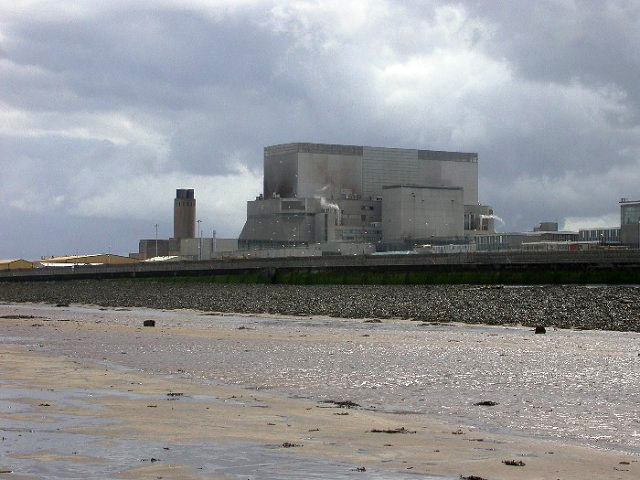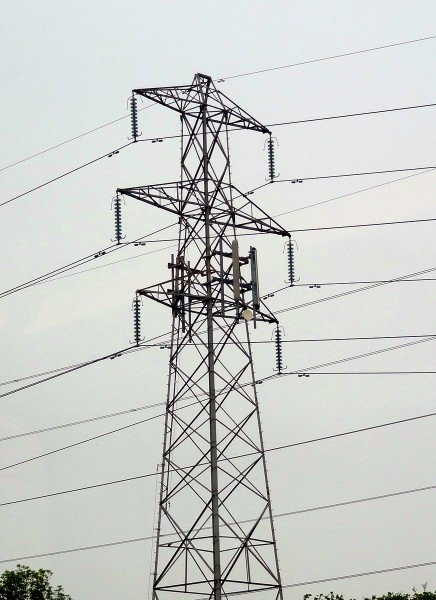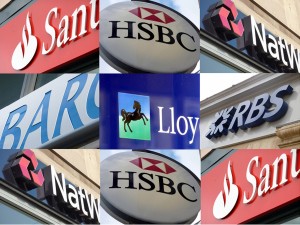 The UK government has just given the go-ahead for the building of two new nuclear reactors at Hinkley Point in Somerset. The contract to build and run the power station will go to EDF, the French energy company.
The UK government has just given the go-ahead for the building of two new nuclear reactors at Hinkley Point in Somerset. The contract to build and run the power station will go to EDF, the French energy company.
The power station is estimated to cost some £14 billion to build. It would produce around 7% of the UK’s electricity. Currently the 16 nuclear reactors in the UK produce around 19%. But all except for Sizewell B in Suffolk are due to close by 2023, although the lives of some could be extended. There is thus a considerable energy gap to fill in the coming years.
Several new nuclear power stations were being considered to help fill this gap, but with rising capital costs, especially following the Fukushima disaster in Japan, potential investors pulled out of other negotiations. Hinkley Point is the only proposal left. It’s not surprising that the government wants it to go ahead.
All that remains to agree is the price that EDF can charge for the electricity generated from the power station. This price, known as the ‘strike price’, is a government-guaranteed price over the long term. EDF is seeking a 40-year deal. Some low carbon power stations, such as nuclear and offshore wind and wave power stations, have high capital costs. The idea of the strike price is to reduce the risks of the investment and make it easier for energy companies to estimate the likely return on capital.
 But the strike price, which will probably be agreed at around £95 per megawatt hour (MWh), is roughly double the current wholesale price of electricity. EDF want a price of around £100 per MWh, which is estimated to give a return on capital of around 10%. The government was hoping to agree on a price nearer to £80 per MWh. Either way, this will require a huge future subsidy on the electricity generated from the plant.
But the strike price, which will probably be agreed at around £95 per megawatt hour (MWh), is roughly double the current wholesale price of electricity. EDF want a price of around £100 per MWh, which is estimated to give a return on capital of around 10%. The government was hoping to agree on a price nearer to £80 per MWh. Either way, this will require a huge future subsidy on the electricity generated from the plant.
There are several questions being asked about the deal. Is the strike price worth paying? Are all the costs and benefits properly accounted for, including environmental costs and benefits and safety issues? Being an extremely long-term project, are uncertainties over costs, performance of the plant, future market prices for electricity and the costs of alternative forms of power generation sufficiently accounted for? Will the strike price contravene EU competition law? Is the timescale for construction realistic and what would be the consequences of delays? The articles consider these questions and raise a number of issues in planning very long-term capital projects.
Articles
Hinkley Point: Britain’s second nuclear age given green light as planning permission is approved for first of new generation atomic power stations Independent, Michael McCarthy (19/3/13)
Will they or won’t they? New nuclear hangs in the balance ITV News, Laura Kuenssberg (19/3/13)
Hinkley Point C: deal or no deal for UK nuclear? The Telegraph, Alistair Osborne (19/3/13)
New nuclear power plant at Hinkley Point C is approved BBC News (20/3/13)
Britain’s Plans for New Nuclear Plant Approach a Decisive Point, 4 Years Late New York Times, Stanley Reed and Stephen Castle (15/3/13)
Nuclear power plans threatened by European commission investigation The Guardian (14/3/13)
New Hinkley Point nuclear power plant approved by UK government Wired, Ian Steadman (19/3/13)
Renewable energy providers to help bear cost of new UK nuclear reactors The Guardian, Damian Carrington (27/3/13)
Europe backs Hinkley nuclear plant BBC News (8/10/14)
Information/Reports/Journal Articles
Environmental permitting of Hinkley Point C Environment Agency
NNB Generation Company Limited, Radioactive Substances Regulations, Environmental Permit Application for Hinkley Point C: Chapter 7, Demonstration of Environmental Optimisation EDF
Greenhouse Gas Emission of European Pressurized Reactor (EPR) Nuclear Power Plant Technology: A Life Cycle Approach Journal of Sustainable Energy & Environment 2, J. Kunakemakorn, P. Wongsuchoto, P. Pavasant, N. Laosiripojana (2011)
Questions
- Compare the relative benefits of a construction subsidy and a subsidised high strike price from the perspectives of (a) the government (b) EDF.
- What positive and negative externalities are involved in nuclear power generation?
- What difficulties are there in valuing these externalities?
- What is meant by catastrophic risk? Why is this difficult to take account of in any cost–benefit analysis?
- What is meant by a project’s return on capital? Explain how discounted cash flow techniques are used to estimate this return.
- What should be taken into account in deciding the rate of discount to use?
- How should the extra jobs during construction of the plant and then in the running of the plant be valued when making the decisions about whether to go ahead?
 A particular issue that has received much attention recently is the difficulty of getting loans. One sector that has found this especially hard is those organisations that are part of the so-called ‘social sector’. Organisations that try to do some good in society while achieving a financial rate of return often find finance impossible to obtain and, as such, the economy is allegedly losing out on billions.
A particular issue that has received much attention recently is the difficulty of getting loans. One sector that has found this especially hard is those organisations that are part of the so-called ‘social sector’. Organisations that try to do some good in society while achieving a financial rate of return often find finance impossible to obtain and, as such, the economy is allegedly losing out on billions.
The Big Society is an integral part of the Conservative’s mission and the launch of the Big Society Fund is a key stepping stone in ‘supplying capital to help society expand’. Sir Ronald Cohen, who is Big Society Capital’s Chairman said:
“It will allow an organisation which today is trying to deal for instance with prisoners who are being released and ending up in unemployment then back in prison… to get the capital to increase the size of their organisation and to improve the lives of these prisoners.”
It is hoped that this innovation will help the economy grow through new investment, but will also bring wider benefits to society. One such example is Social Impact Bonds in Peterborough, which aim to help prisoners return to work once they are released from jail. The idea is that rather than being left to their own devices, the scheme helps them integrate back into the community, such that they don’t re-offend, which does tend to be a big problem and creates a big cost for the local community and society at large. In essence, this new bank will simply be providing loans to new social enterprises that demonstrate they can generate an income stream and also provide societal benefits. The financial return will encourage investors, as will the idea of doing some good for society. The following articles consider this new social innovation.
Unclaimed bank cash to fund ‘Big Society’ Sky News (4/4/12)
Big Society Fund launches with £600m to invest BBC News (4/4/12)
’Big Society Bank’ to start providing capital Financial Times, Sarah Neville and Jonathan Moules (4/4/12)
David Cameron unveils Big Society Bank to help savers invest in good causes Telegraph, Rowena Mason (4/4/12)
David Cameron launches £600m ‘big society fund’ Guardian, Nicholas Watt (4/4/12)
The Big Society Promise that has yet to deliver Independent (4/4/12)
Questions
- Where is the finance for the big society bank coming from?
- Do you think the financial return from investments through the big society bank will have to be equal to the financial return on business investments?
- Explain the relevance of externalities to this new social innovation.
- To what extent do you think funding through the big society bank is simply a way of replacing direct government funding of the welfare state?
- Do you think the amount of money this bank is enough to make any difference?
- Why do you think social projects find it difficult to obtain funding through traditional lending?
 From April 2012, the average household water bill will rise by 5.7% to approximately £367. With households already feeling the squeeze this news is more than unwelcome. The increase in prices will not be standardized across England and Wales. Instead some households will suffer more than others, as their water providers increase prices significantly more than those in other areas.
From April 2012, the average household water bill will rise by 5.7% to approximately £367. With households already feeling the squeeze this news is more than unwelcome. The increase in prices will not be standardized across England and Wales. Instead some households will suffer more than others, as their water providers increase prices significantly more than those in other areas.
There has been significant investment in the water industry over the past few years and if this is to continue, funding is required: hence the price hikes. More investment is taking place in some areas than in others and so this goes some way to explaining why some households will see their bills rise by a relatively larger amount. Ofwat, the water regulator, has said that if the investment that these price rises are paying for doesn’t materialize action will be taken. In the context of the current financial situation, consumer groups are understandably concerned about the impact this may have on the lowest income households. Tony Smith, the Chief Executive of the Consumer Council for Water has said:
‘We’ll be making sure that customers get some benefits from this and also that companies step up their help for customers with affordability problems’.
The following articles consider this issue.
How to cut your water bill The Telegraph, Kara Gammell (31/1/12)
Water bills rise by average of 5.7% Guardian, Jill Insley (31/1/12)
Water meter case study: ‘They have set the charges too high’ Guardian, Jill Insley (31/1/12)
Water bills to rise by 5.7 per cent Financial Times, Elaine Moore (31/1/12)
Welsh water imposes lowest increase The Press Association (31/1/12)
Questions
- Why are household incomes already being squeezed?
- Why would you suggest that the RPI and not the CPI has been used to make up the price rises?
- Why are there such wide variations in the amount that consumers are currently charged in different parts of the country? Do you think this is fair? You may find it useful to look at a previous blog on the site
- What is the role of the regulator, Ofwat?
- Can Ofwat’s decision to allow prices to rise by more than the RPI be justified?
The health of an economy is generally measured in terms of the growth rate in GDP. A healthy economy is portrayed as one that is growing. Declining GDP, by contrast, is seen as a sign of economic malaise; not surprisingly, people don’t want rising unemployment and falling consumption. The recession of 2008/9 has generally been seen as bad news.
But is GDP a good indicator of human well-being? The problem is that GDP measures the production of goods and services for exchange. True, such goods and services are a vital ingredient in determining human well-being. But they are not the only one. Our lives are not just about consumption. What is more, many of our objectives may go beyond human well-being. For example, the state of the environment – the flora and fauna and the planet itself.
Then there is the question of the capital required to produce goods and maintain a healthy and sustainable environment. Capital production is included in GDP and the depreciation of capital is deducted from GDP to arrive at a net measure. But again, things are left out of these calculations. We include manufactured capital, such as factories and machinery, but ignore natural capital, such as rain forests, coral reefs and sustainable ecosystems generally. But the state of the natural environment has a crucial impact on the well-being, not only of the current generation, but of future generations too.
In the video podcast below, Professor Sir Partha Dasgupta, from the Faculty of Economics at the University of Cambridge and also from the University of Manchester, argues that the well-being of future generations requires an increase in the stock of capital per head, and that, in measuring this capital stock, we must take into account natural capital. In the paper to which the podcast refers, he argues “that a country’s comprehensive wealth per capita can decline even while gross domestic product (GDP) per capita increases and the UN Human Development Index records an improvement.”
 Nature’s role in sustaining economic development (video podcast) The Royal Society, Partha Dasgupta
Nature’s role in sustaining economic development (video podcast) The Royal Society, Partha Dasgupta
Nature’s role in sustaining economic development Philisophical Transactions of the Royal Society B, vol 365, no. 1537, pp 5–11, Partha Dasgupta (12/1/10)
GDP is misleading measure of wealth, says top economist University of Manchester news item (21/12/09)
Economics and the environment: Down to earth index Guardian (28/12/09)
Questions
- Why might a rise in GDP result in a decline in human well-being?
- In what sense is nature ‘over exploited’?
- What is meant by ‘comprehensive wealth’ and why might comprehensive wealth per capita decline even though the stocks of both manufactured capital and human capital are increasing?
- What is meant by ‘shadow prices’ in the context of natural capital?
- How might economists go about measuring the shadow prices of capital?
- What factors should determine the rate of discount chosen for projects that impact on the future state of the environment?
Setanta is a sports broadcaster that emerged from an Irish dance hall in West London in the 1990s. Since 2004 it has grown rapidly, acquiring major sporting rights and acting as something of a rival to Sky. However, Setanta has now gone into administration following the collapse of talks with a US investor, its failure to pay a number of sporting organisations and the loss of its English Premier League games. Having less than 60% of the annual subscribers needed, and competing against Sky, it is hardly surprising that this broadcaster has now exited the industry. But, what are the reasons behind this collapse? Marketing, advertising, pricing, the recession or dominance by its competitors? What will be the impact of this bankruptcy on its employees, the Pay TV market, sporting organisations and its customers?
Offer made for stake in Setanta BBC News (12/6/09)
Troubled sports channel stops broadcasting CBBC Newsround (24/6/09)
Setanta goes off air with loss of more than 200 jobs Guardian, James Robinson, Leigh Holmwood (23/6/09)
Blavatnik offers Setanta lifeline BBC News, Robert Peston (12/6/09)
Last-ditch effort to save Setanta BBC News (9/6/09)
Football’s minnows braced to take full force of Setanta collapse Guardian, Owen Gibson (24/6/09)
UFC: After Setanta divorce where now: Bravo, Viring, Channel 5 or Sky? Telegraph, Gareth Davies (23/6/09)
Setanta sports taken off air in Britain Times Online, Dan Sabbagh (23/6/09)
Questions
- How was Setanta able to expand so quickly? Is this part of the reason for its failure?
- Premium content, such as Premier League matches, is already dominated by BSkyB. What does the collapse of Setanta mean for the structure of the Pay TV market?
- What reasons could explain Setanta’s inability to attract sufficient subscribers? Is its collapse a consequence of the recession, or are there other factors? What are they?
- Who will lose out from Setanta’s bankruptcy? Think about all those connected with Setanta. What will happen to the Scottish Premier League, which has paid the SPL clubs out of its own pocket? Will it get this money back?
- Do you think there were any other options open in a bid to rescue Setanta? If Ofcom had stepped in to regulate the industry, would it have made a difference?
 The UK government has just given the go-ahead for the building of two new nuclear reactors at Hinkley Point in Somerset. The contract to build and run the power station will go to EDF, the French energy company.
The UK government has just given the go-ahead for the building of two new nuclear reactors at Hinkley Point in Somerset. The contract to build and run the power station will go to EDF, the French energy company. But the strike price, which will probably be agreed at around £95 per megawatt hour (MWh), is roughly double the current wholesale price of electricity. EDF want a price of around £100 per MWh, which is estimated to give a return on capital of around 10%. The government was hoping to agree on a price nearer to £80 per MWh. Either way, this will require a huge future subsidy on the electricity generated from the plant.
But the strike price, which will probably be agreed at around £95 per megawatt hour (MWh), is roughly double the current wholesale price of electricity. EDF want a price of around £100 per MWh, which is estimated to give a return on capital of around 10%. The government was hoping to agree on a price nearer to £80 per MWh. Either way, this will require a huge future subsidy on the electricity generated from the plant.

